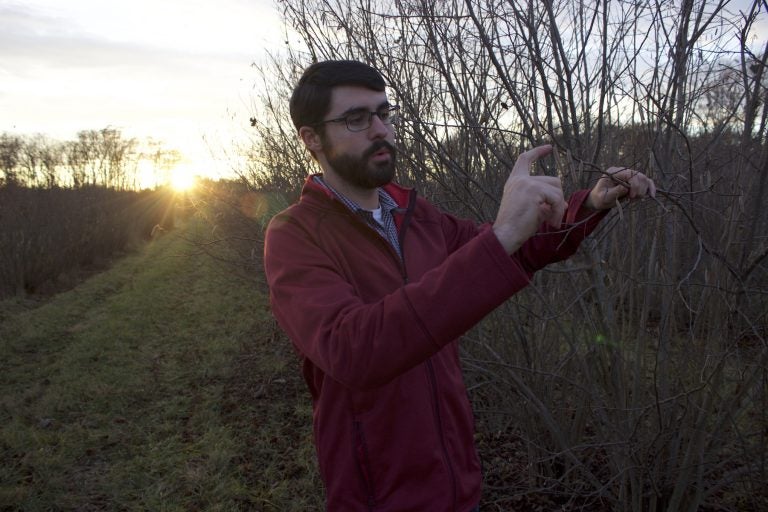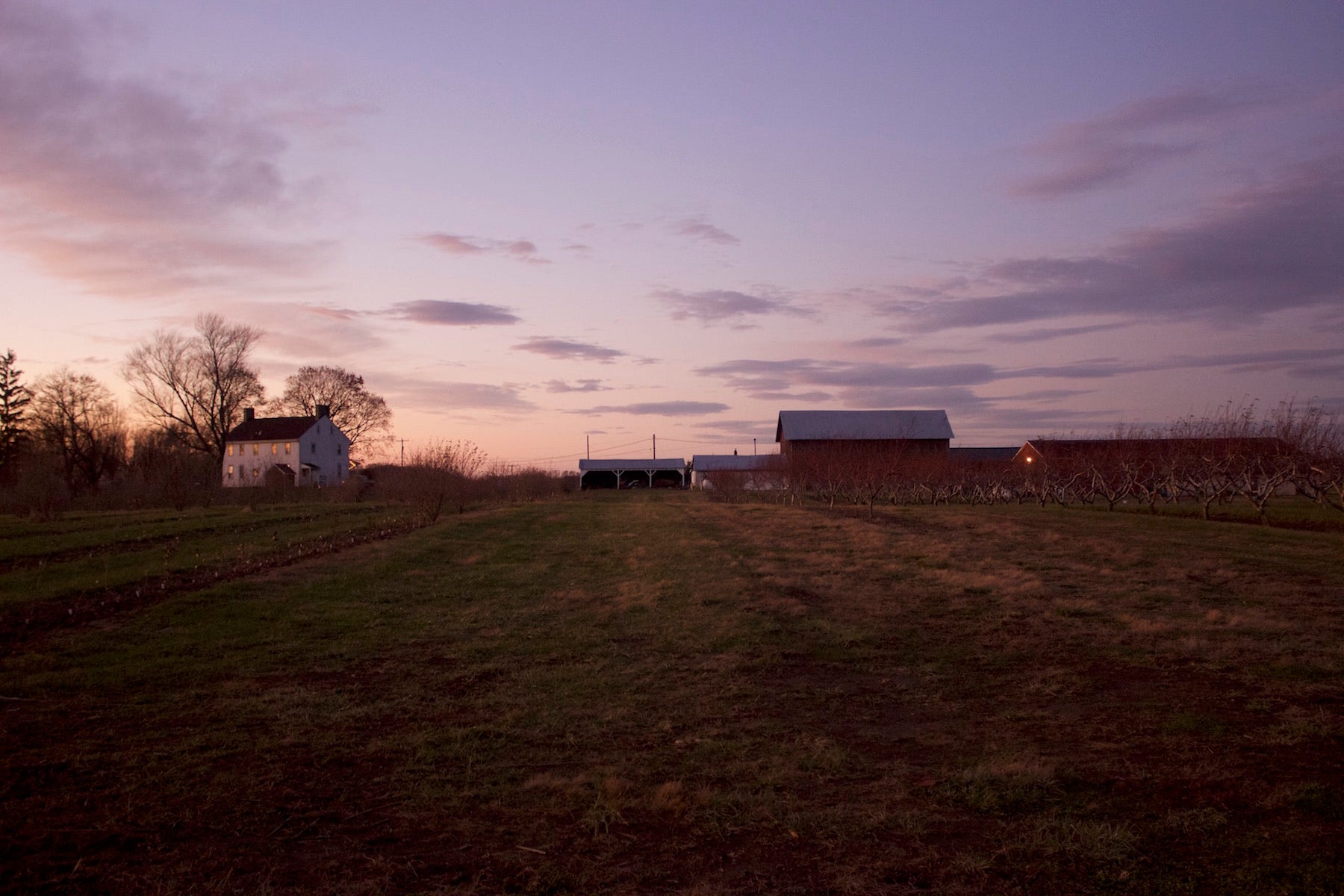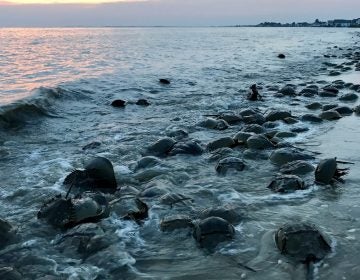Are hazelnuts New Jersey’s next big cash crop?
One Rutgers researcher brought his work home in the hopes of preserving his family farm for years to come.

David Hlubik, 23, inspects the branch of a hazelnut tree, one of thousands at a Rutgers University research center in Cream Ridge, N.J. (Grant Hill for WHYY)
David Hlubik always had two loves: agriculture and science.
He was only a few years old when he first lent a hand on his uncle’s farm in Chesterfield, New Jersey and ever since then he’s kept tabs on what works and what doesn’t.
“Nowadays, we don’t have a ton of farms left in New Jersey, but the ones we do have left have been successful because they’ve been very diversified,” Hlubik said. “So you’re not putting all your eggs in one basket.”
Now the 23-year-old is putting that hypothesis to the test.
Hlubik is a member of a team of researchers at Rutgers University developing what they hope will be the Northeast’s next cash crop: hazelnuts.
Through plant breeding and careful testing, the researchers want to provide local farmers with a sustainable new revenue stream to meet rising global demands for the nutritious nut. Hlubik Farms is among the first 20 in the region to get a head start.

“Being one of the first test farmers you kind of get a taste for something really new that very few people in New Jersey are getting to grow right now,” Hlubik said. “And so I would say more than anything, I think [my uncle] was excited about it.”
The project has been in the works for just about as long as Hlubik has been alive. Thomas Molnar, who now heads the research, was still an undergraduate student when his professor first approached him with the idea.
“The goal of the research during that era and for the next 10 years was really to to look at all these different potential temperate nut tree species and see which ones were best adapted to New Jersey and the Northeast of the U.S.,” Molnar said.
Once they narrowed it down to hazelnuts, the questions got bolder.
“Could we develop a commercial industry and can we really enhance and develop these different nuts to be a part of our food landscape in the eastern United States?” Molnar said.

The United States grows about 5% of the world’s hazelnuts, nearly all coming from Oregon, according to Hlubik.
With the continued help of popular hazelnut products like Nutella, that market is expected to grow.
“I think New Jersey and the Northeast has the potential to get at least that much production. We’ve got the land here, we don’t have a ton of it, but even on limited acreage we’re looking to try to get numbers around that,” Hlubik said.
Commercial production of the nut in our region was previously thought to b be all but impossible thanks to Eastern Filbert Blight, a fungal disease that ravaged Hazelnut trees throughout the continent, outside of the Pacific Northwest.
“We realized that if we could develop plants that were genetically resistant to Eastern Filbert Blight, find plants that exist in nature that are resistant, and then use them in a breeding program to develop really high quality, cold hardy, adapted high-yielding cultivars, we could, in fact, have a hazelnut industry,” Molnar said.
That could mean big returns for farmers and their land.
Perennial crops such as trees help reduce soil degradation by eliminating the need for tilling. Hazelnut trees, in particular, require little irrigation and have fewer pest problems than apple or peach trees, which cuts down on the use of pesticides, Molnar said.
Hlubik joined the team four years ago, working with farmers in the Upper Midwest to develop hazelnut varieties better suited for colder conditions.
If the test plots in New Jersey are successful, Hlubik says farms in the area like his uncle’s land could see an enormous economic and environmental upside in the experiment: an opportunity to preserve their land and way of life during treacherous times.
“I’ve been a little surprised because you expect the younger farmers especially to be excited about this. But even some of the older farmers that have been growing the same thing for a long time, they have these traditions, and they’re still very excited too,” Hlubik said.
“Some of these guys are showing up and they’re saying: ‘Well, you know, it might not be what we’re used to growing, but I want this to be able to support my kids and their kids for many generations.’”
WHYY is your source for fact-based, in-depth journalism and information. As a nonprofit organization, we rely on financial support from readers like you. Please give today.





